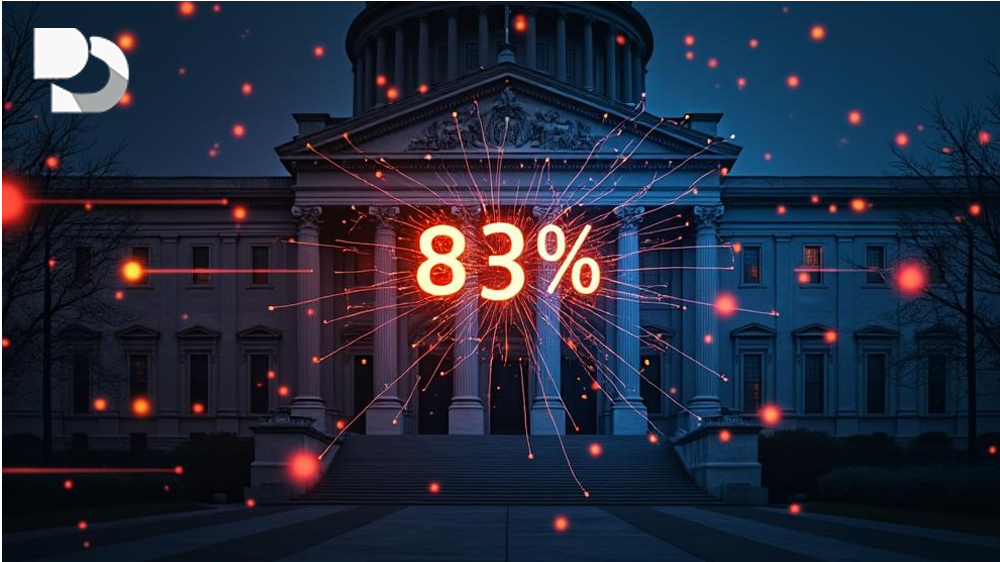
Government Shutdown Enters Critical Phase
The US government shutdown has entered its second week with no clear resolution in sight. Budget negotiations between Republicans and Democrats remain stalled, primarily over disputes about social program funding and spending cuts. This marks the latest in a series of government shutdowns that have occurred since 1976, with the 2018-2019 shutdown lasting 35 days and costing the economy over $11 billion according to Congressional Budget Office estimates.
Analysts are growing increasingly concerned that the current impasse could extend beyond the October 15 deadline, which represents the next critical budget target. If Congress fails to reach an agreement by that date, the shutdown could potentially continue for several more weeks.
Prediction Markets Signal Extended Shutdown
Polymarket, a decentralized prediction platform, shows traders placing an 83% probability that the shutdown will continue past October 15. This sentiment aligns with media reports indicating little progress in Congressional negotiations as of Thursday, October 9. The platform has seen over $2 million in trading volume on this particular market, reflecting significant investor interest in the outcome.
Prediction markets like Polymarket have demonstrated reasonable accuracy in forecasting major political events, with historical accuracy rates between 70-90% for events like the 2024 US election. The current 83% probability suggests market participants see minimal chance of a quick resolution to the budget standoff.
Economic Consequences Mount
Each week of shutdown is costing the US economy approximately $3 billion in permanent losses, according to economists. These losses stem from stalled federal spending, delayed grants, and declining consumer confidence. If the shutdown continues through October 15, total economic losses could reach $6 billion, with potential losses of $9-12 billion if it extends into November.
The economic impact extends beyond direct government spending. Federal workers face furloughs, government services experience disruptions, and business uncertainty increases across multiple sectors. The cumulative effect could have lasting consequences for economic growth and stability.
Market Implications
Historical patterns from the 2018-2019 shutdown provide some indication of potential market reactions. During that 35-day shutdown, the S&P 500 declined by 2.5% while Bitcoin experienced an 8% drop as uncertainty spread across both traditional and cryptocurrency markets.
Current analysts are forecasting similar patterns if the shutdown extends beyond mid-October. US equities could see declines of 3-5%, while cryptocurrency volatility may increase, particularly for Bitcoin and Ethereum trading pairs. The uncertainty surrounding government operations tends to create broader market instability as investors react to the political impasse and its economic consequences.
I think what’s interesting here is how prediction markets are becoming more mainstream for political forecasting. They’re not perfect, but they do aggregate collective wisdom in a way that traditional polling sometimes misses. The high probability assigned to an extended shutdown suggests market participants see little room for compromise in the current political environment.
Perhaps the most concerning aspect is the economic damage that accumulates with each passing day. It’s not just about the immediate financial impact, but the longer-term effects on business planning and consumer confidence. When government operations stall, it creates ripple effects throughout the entire economy that can take months to fully resolve.
